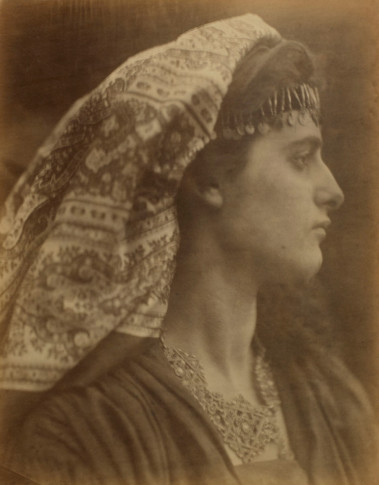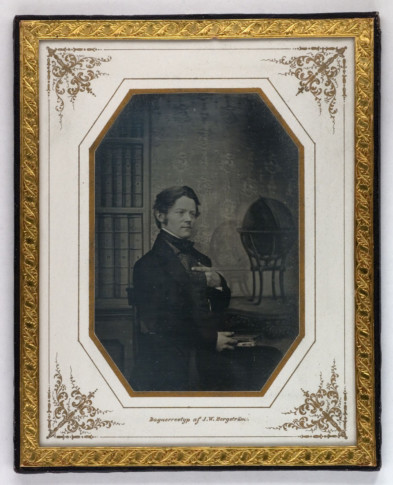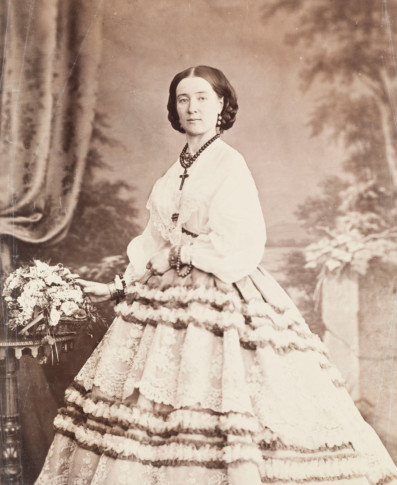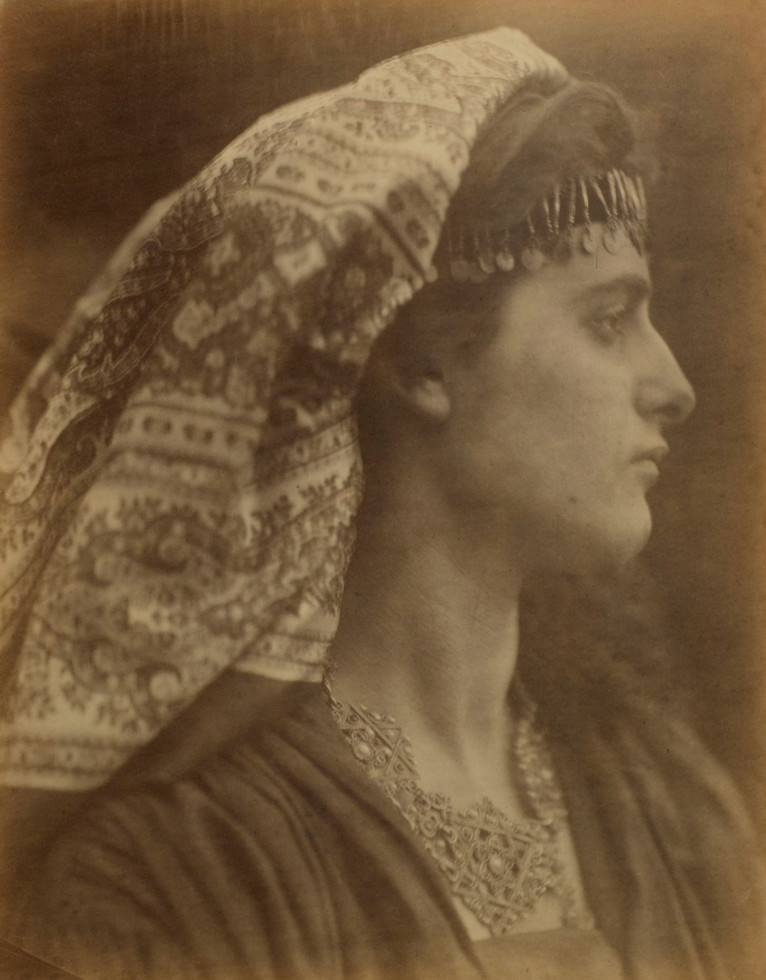
Julia Margaret Cameron, The Mother of Salome, 1870 Albumen Silver Print
Photographic materials
You get a presentation of the commonly accepted definitions of various photographic methods and materials, the period when they were in use, the properties of the final image, a description of the technique used, characteristic features, and ways of identifying the material.
Albumen Silver Print
1850 – ca 1900
silver in albumen on paper
A paper is brushed with a solution of albumen (egg white) and table salt and is allowed to dry. It is then bathed in silver nitrate and again allowed to dry, this time in darkness. Albumen, salt and silver form an emulsion containing light-sensitive silver salts which are exposed in daylight in direct contact with a negative until the desired image appears (printing-out). Residual light-sensitive silver salts are then removed through fi xation, and the picture is washed in water. After 1855, most albumen silver photographs were goldtoned, followed by additional fi xation and rinsing. Commercially produced albumen silver paper became available in 1863. Albumen silver prints have a thin paper support and are therefore normally mounted. The surface is usually glossy, and the tone may vary from yellow/red/brown to a violet blue, depending on exposure time and toning. Prints commonly change in tone to yellow/yellow-green in high-keys due to deterioration of the albumen. In magnifi cation characteristic cracks can be seen.
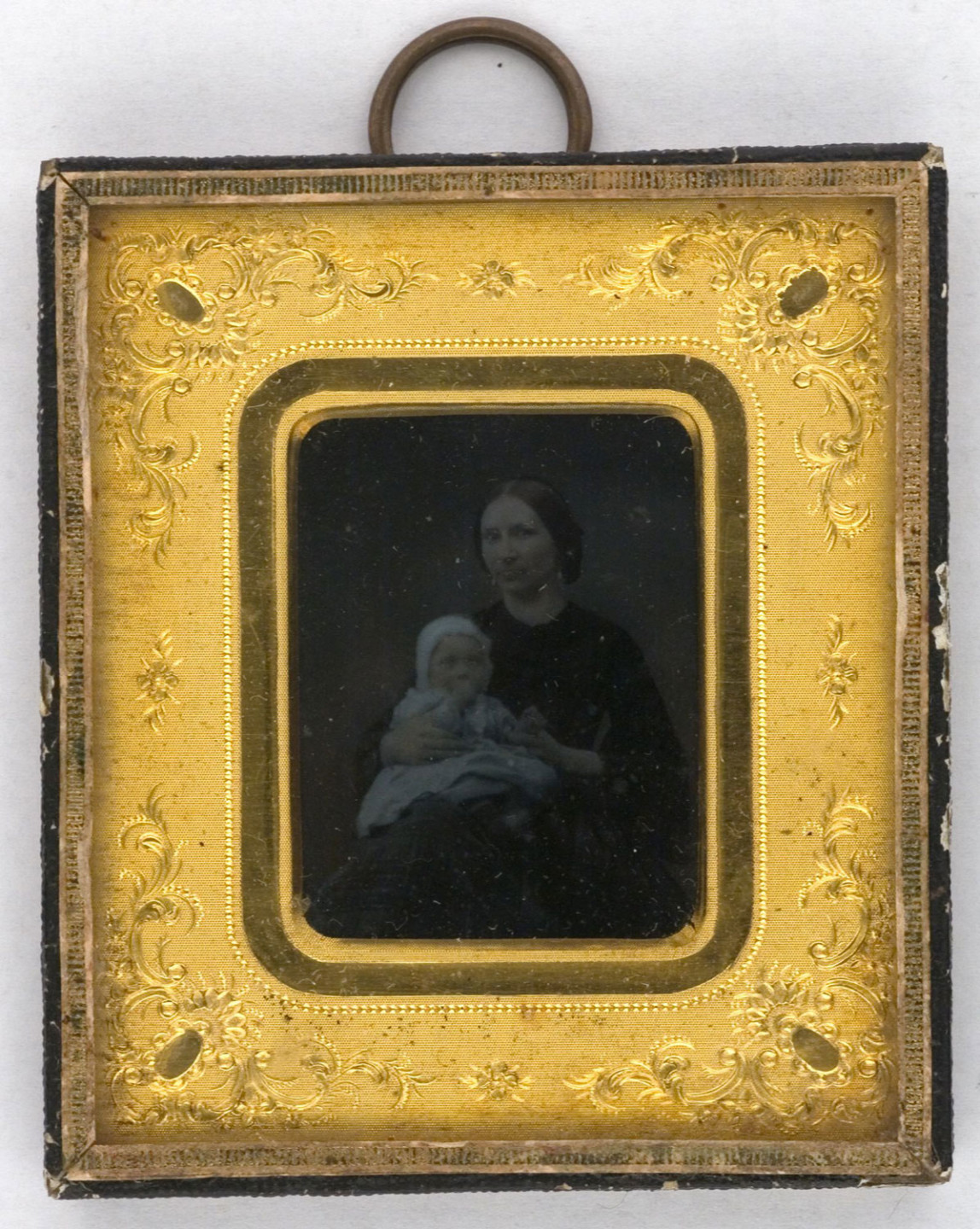
Ambrotype
1854 – ca 1880
silver in collodion on glass
A glass plate, coated with silver halogens in collodion, is sensitised with silver nitrate and then exposed wet in the camera. After being developed in iron sulphate – occasionally with the addition of silver nitrate – and fixed in potassium cyanide and washed, the plate is allowed to dry. The picture is then lacquered or protected with a sheet of glass, and the back is coated with black lacquer, textile, or cardboard so that the picture – actually a thin negative – is seen as a positive. It is a direct positive which is often tastefully displayed with mats and under glass in cases. Ambrotypes have a neutral tone, but are sometimes hand-tinted. The surface is characterised by a typical “doubleness”, as high-keys can be seen in the negative on the glass surface and low-keys against the dark background lining.
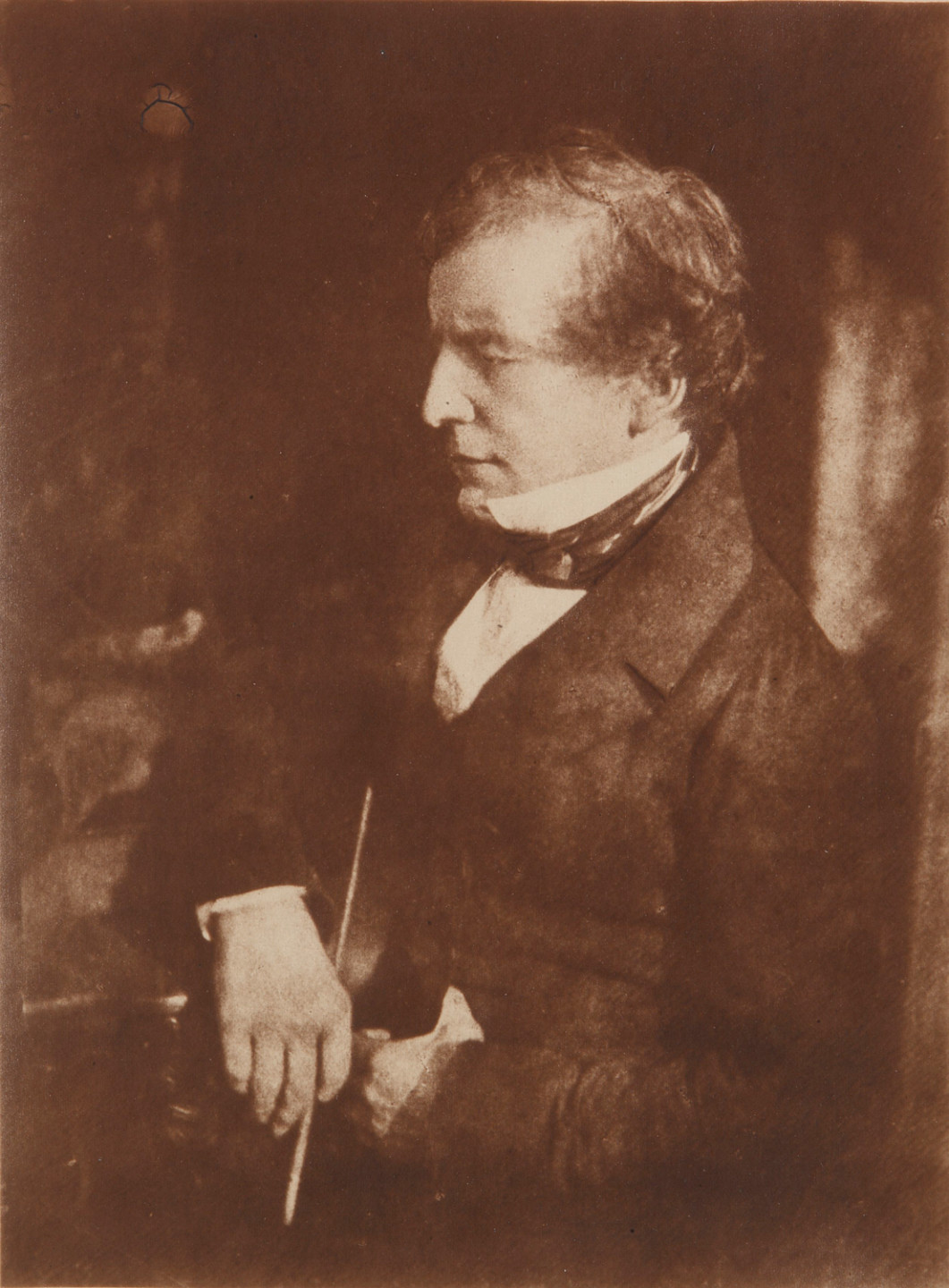
Carbon Print
1864 – ca 1930
charcoal (and colour) pigments and potassium bichromate in gelatin on paper
An emulsion with pigment and potassium dichromate in gelatin on thin paper is exposed in contact with a negative in daylight. The gelatin is hardened in relation to the amount of light during the exposure. The soaked paper is then turned over and pressed against a new support, coated with insoluble gelatin. The original support comes off in a bath of warm water or may be pulled off, and leaves an image with hardened pigmented gelatin. Any unexposed gelatin can then be washed off. The picture is finally subjected to an alum bath to remove the residual light-sensitive dichromate and to further harden the remaining gelatin. The result is a reversed image. It can be corrected by first reversing the negative or by transferring the image to a new support (Autotype).
Bühler and Höchheimer: A direct process on fabricated papers which were sensitised in alcohol, exposed in contact with a negative and developed in water. Carbon prints have a clear relief character with raised and glossy low-key areas. The tone is usually deep brown or black, but may vary with the choice of pigment. In magnification the emulsion gives a “ragged” impression, especially in high-keys.
Collodion Silver Print (Celloidin, Aristotype)
1880 – ca 1930
silver in collodion on paper
Photographic paper coated with an emulsion of silver halogens in collodion (nitrocellulose). Between the emulsion and the paper support is a baryta layer containing barium sulphate which keeps the image from sinking into the paper fibres and lends the picture its whiteness and surface texture. The paper is exposed in daylight in contact with a negative until the picture appears (printing-out). It can then be fixed, toned, and washed. Collodion silver prints have a thin paper support and usually a glossy, smooth surface. A paper with additional starch was introduced in the 1890s. This paper gave a matte surface. Without toning, the picture ranges from reddish brown to neutral, with gold toning the tone is cooler. If viewed in fluorescent light (such as a light tube) a colour spectrum is clearly seen in the surface, and tiny scratches in the emulsion may appear in magnification. Celloidin and Aristotype were originally brand names, but is often used to designate collodion silver prints.
Collotype, Heliotype
1860 – ca 1930
colour pigments on paper
A glass plate is first coated with a thin layer of gelatin, hardened with sodium silicate and with an emulsion of light-sensitive sodium- or ammonium dichromates in gelatin and is then allowed to dry in darkness. The plate is then exposed in direct contact under a negative. The gelatin of the bottom layer is hardened in proportion to the amount of light. Remaining dichromates are removed in a rinse while the gelatin swells up and buckles, forming an irregular, threadlike reticulation pattern. Depressions consist of hardened gelatin and raised areas of gelatin, capable of absorbing water. The plate is then dampened and rolled with greasy printing ink which gathers in depressions (low-keys) or is repelled by the moist surface of the unhardened gelatin relief (high-keys). The image can then be printed on a paper.
An alternative method consists of replacing the prepared glass plate with sheet film that has undergone fixation. Collotypes are rich in detail and give the appearance of having a continuous grey scale. Because of this, they may be difficult to distinguish form collodion or gelatin silver prints. However, in magnification the characteristic pattern can be seen distinctly. The picture is classified as a photomechanical image and does not therefore constitute a true photograph.
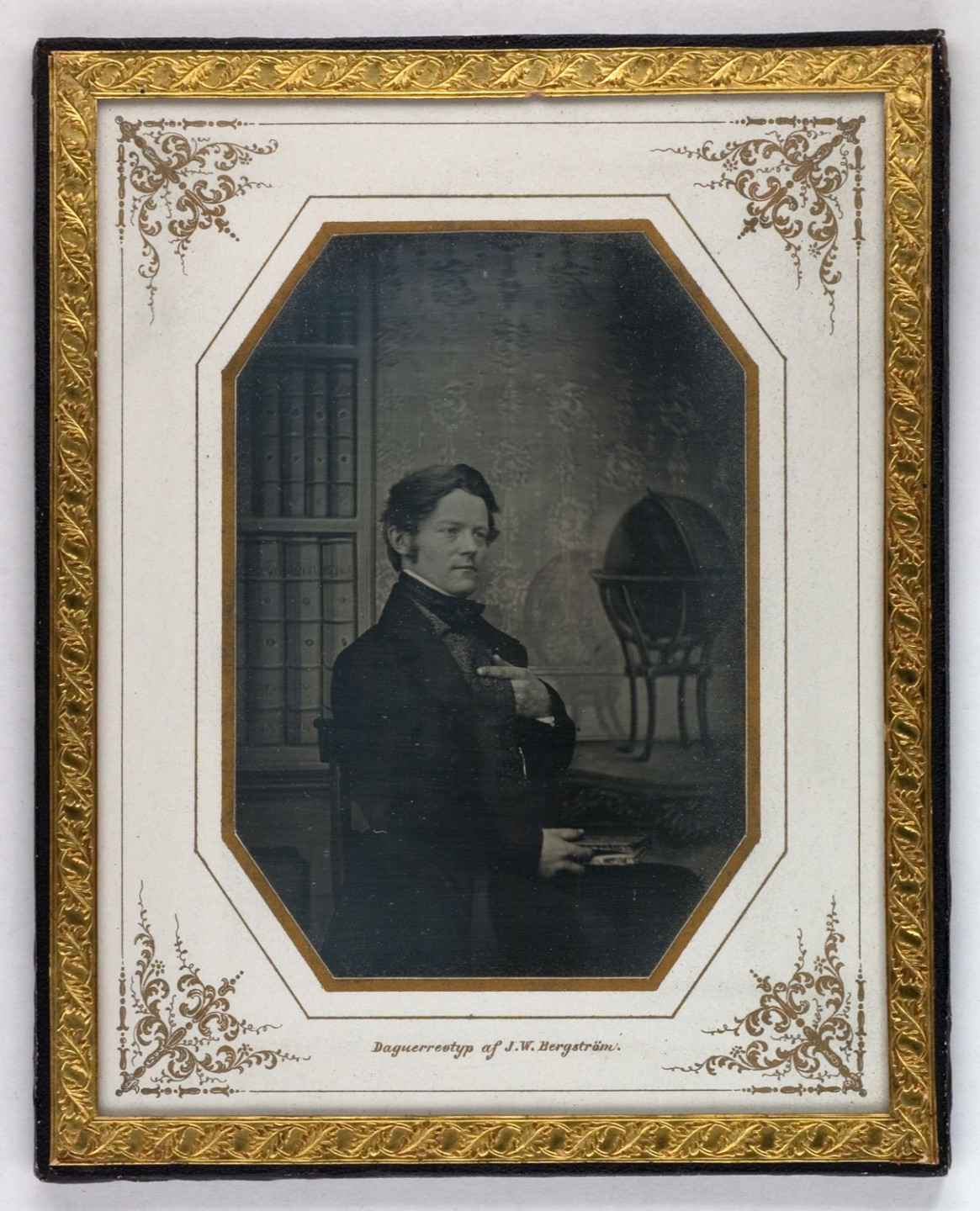
Daguerreotype
1839 – ca 1865
amalgam on silver-coated copper
A copper plate is coated with a thin layer of silver, buffed and treated with iodine vapour in a closed container, transforming the silver to light-sensitive silver iodide. After being exposed in the camera for 10–30 minutes, the image is developed in heated mercury vapour. Silver and mercury form a white amalgam and the image is a reverse, low contrast positive. The picture was initially fixed in a saline bath, later in a bath of sodium sulphite. A subsequent toning in gold solution strengthened the sharpness and stability of the image. To protect the image against chemical and physical damage, the plate was tightly sealed with mats and glass and often enclosed in a case. Daguerreotypes are detailed, neutral in tone, sometimes hand-tinted, and are easily distinguishable by their alternately negative and positive impressions, depending on the angle of the light in which they are viewed.
Ferrotype, Tintype
1856 – ca 1900s
silver in collodion on a ferric support (tin)
A black lacquered iron plate is coated with potassium iodide and bromide in collodion and sensitised with silver nitrate just before being exposed in the camera. Development in iron sulphate and silver nitrate results in an image, seen as a positive against the black of the background. Fixation is usually done with potassium cyanide. After washing and drying, the image is coated with varnish. This technique was inexpensive and the whole process took no more than 10–15 minutes. The plates were often presented in simple decorative paper sleeves. Ferrotype, a direct positive, has a glossy to semi-glossy surface. The grey scale is neutral and the contrast low. The term Ferrotype is used in Europe, Tintype in the United States.
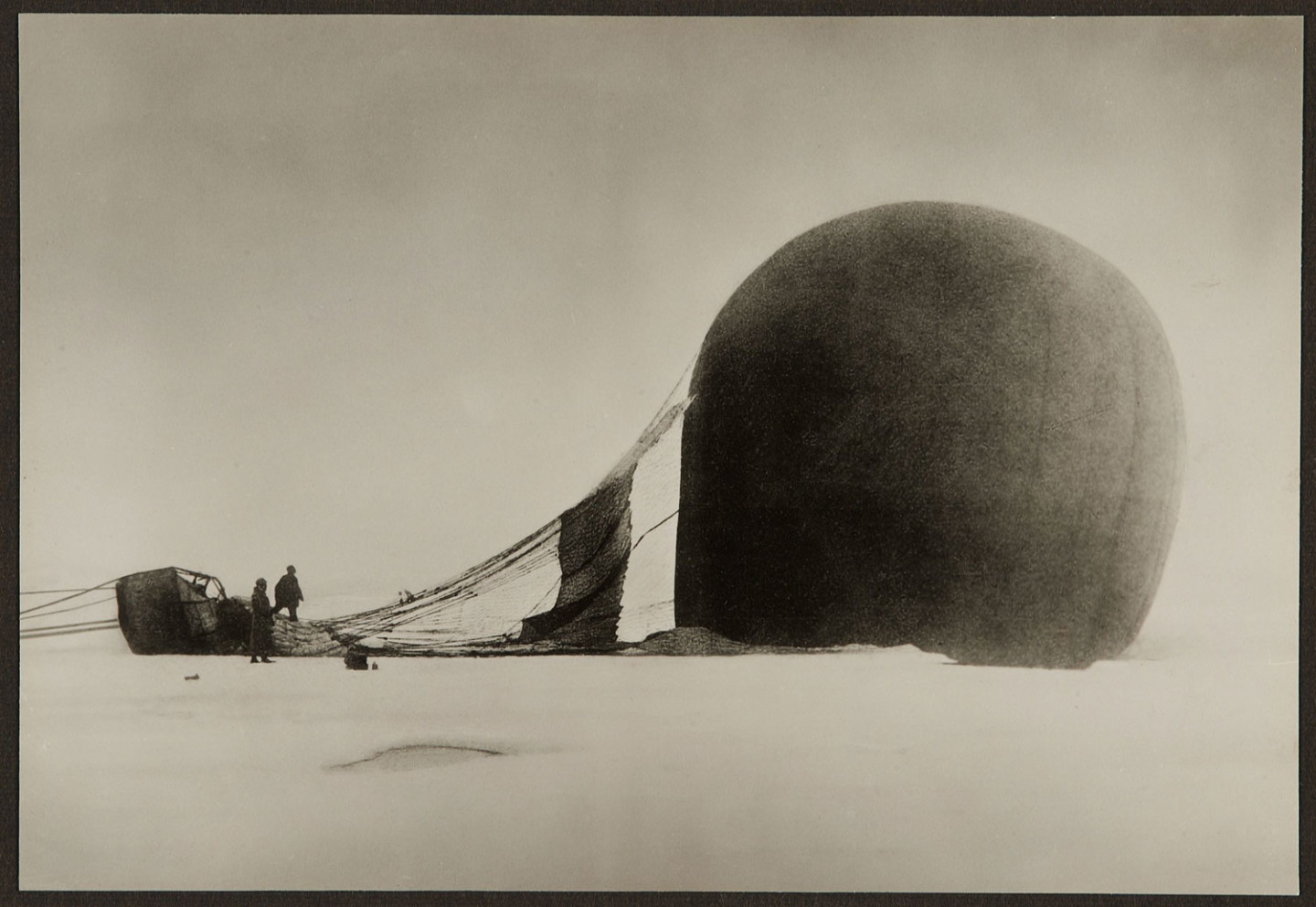
Gelatin Silver Print
1882 –
silver in gelatin on paper
Photographic paper coated with an emulsion of light-sensitive silver halogens in gelatin. The silver salts may be silver bromide, silver chloride, or a combination of both. Between the emulsion and the paper support there is a baryta layer containing barium sulphate which prevents the image from sinking into the paper fibres and gives the picture its whiteness and surface texture. Paper with silver bromide or a combination is exposed in a darkroom with artificial light either through direct contact or in enlargement. In an alkaline developing bath the silver in the latent image is reduced to metallic silver. After an acid stop-bath the remaining photo-sensitive salts can be dissolved through fixation and washed away.
Paper with silver chloride is less sensitive and is exposed in daylight in direct contact with a negative until the required image appears (printing-out) and then unexposed silver salts are washed away. Subsequent toning brings changes in tone and often greater permanence through the formation of more stable silver compounds. Gelatin silver prints exist in a large range of surface textures and glossiness, tonal ranges and gradation. The tone of the image is influenced by the choice of paper, developer, additive toning or tinting. Post-1970s they sometimes have an RC (resin coated) paper base.
Photogravure
1880 –
pigments on paper
A paper support with gelatinised potassium dichromate is exposed to ultraviolet light in contact with a transparent positive. The gelatin is hardened by the light, and the layer is then transferred to an aquatint-grained copper plate. The carbon or rosin powder forms a screen that “breaks up” the image. Any unhardened gelatin can then be rinsed off. The copper plate is etched in iron chloride solutions. The process is in proportion to the thickness of the gelatin layer. When ordinary print dye is applied, it collects in the etched areas of the plate and the image is then printed on paper in a copper plate press. The way the dye is applied is of great importance and the process has to be repeated for each print.
An alternative technique is to expose a screen on the gelatin before the positive is transferred to the copper plate. Photogravures have obvious marks from the printing press around the edges. Areas of low light are reminiscent of carbon pigment and highlights correspond to the tone of the paper. The image tone seems continuous, but in magnification a characteristic pattern can be seen and as there is no binding agent, fibres are clearly visible in the paper. Photogravure is classified as a photomechanical image and thus does not constitute a true photograph.
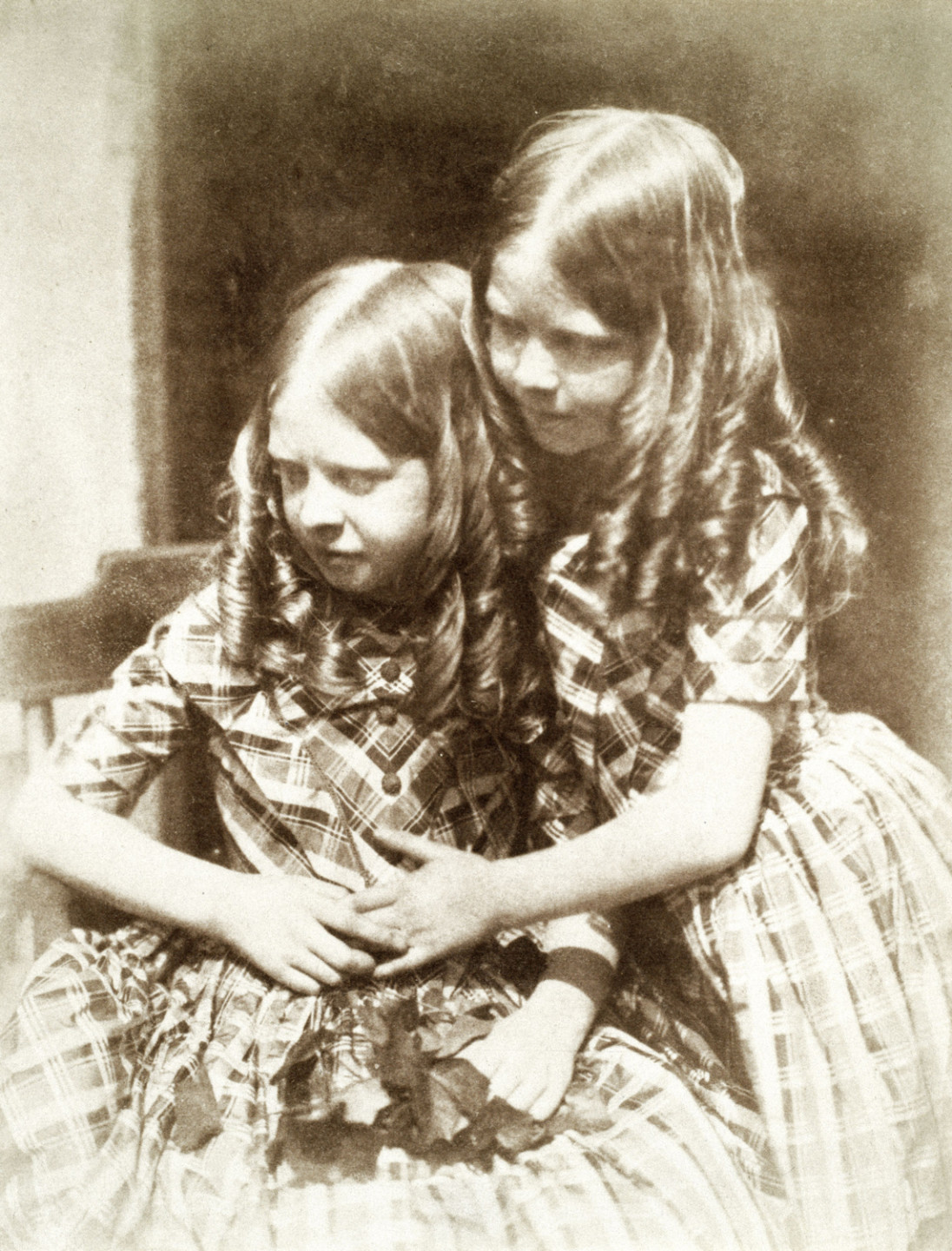
Salted Paper Print, Calotype
1839 – ca 1870
silver in common salt on/in paper
A paper is first soaked in a saline solution and then brushed on one side with silver nitrate, forming light-sensitive silver chloride. After allowing the paper to dry in the dark, it is exposed in sunlight for hours, in contact with a negative, until the image appears (printing-out). Excess silver chloride is then subjected to fixation in a strong saline solution or in sodium thiosulphate and is rinsed away in water. Subsequent gold toning (after 1849) lent the picture a richer tonal range and greater permanence. After 1950 they were often waxed and/or sometimes coated with a layer of albumen. Salted paper prints have a matte finish, and the paper fibres of the support are clearly visible in magnification. When fixed in salt, the image tone is reddish brown; in sodium sulphate it is a yellowish orange. Permanence is relatively low, and when faded or discoloured the prints turn to a yellowish brown. This technique was the first used to reproduce an image on paper from a negative. Although the term calotype is sometimes used, a calotype is actually a salted paper negative.
Learn more about early photographic processes from George Eastman Museum: Photographic Processes Series on Youtube

